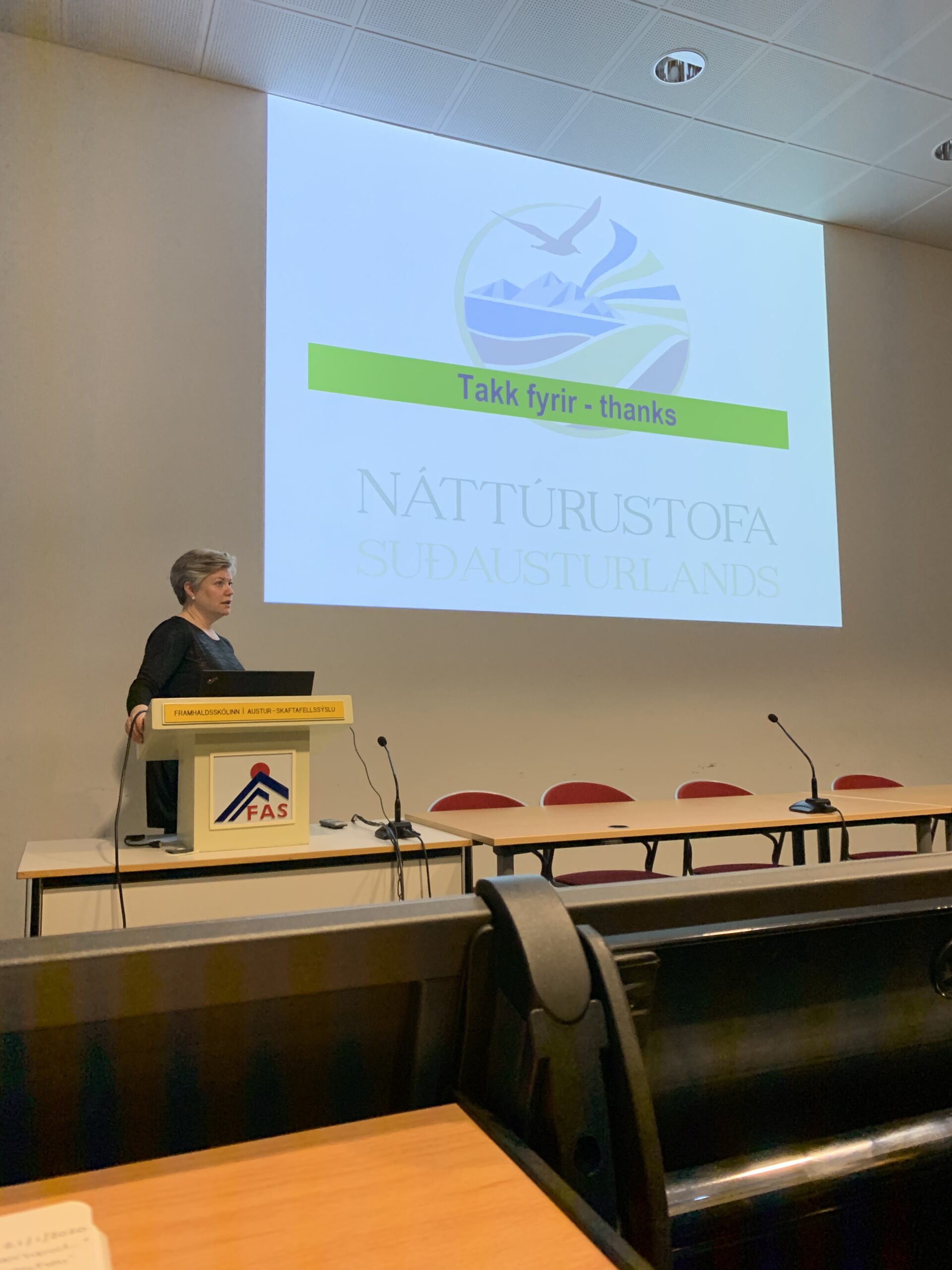Höfn, Iceland is a quaint community located on the Eastern side of the island know for its fish, glaciers, and the University of Iceland Research Center. As a class, we were fortunate enough to visit the research center and experience three different lectures presented by Kirstín the meteorologist, Snaevarr the glaciologist, and Thorri the director of the institute. Our first lecture consisted was a discussion of both global climate change and climatic changes in Iceland specifically. Following that, Snaevarr informed us on glacier change in the area and the national implications of that change. Finally, Thorri discussed tourism, Vatnajökull National Park, and the importance of combining the arts and sciences to depict climate change. While these three lectures were completely different in nature, Thorri wrapped them all together perfectly by highlighting the community aspect and interdisciplinary approach of the center.
At Gustavus, we champion the liberal arts perspective and the need for interdisciplinary understanding. By pairing the sciences with the arts, humanities, etc. we equip ourselves to understand the complexities of issues in hopes of solving some of our worlds greatest challenges — climate change being one of them. Utilizing multiple disciplines allows us to marry things that appear to have no connection. In Thorri’s case it was the arts and the sciences; for us in this course, it’s landscape and identity. It’s a call for complexity in the narratives around us.
Our journey thus far has asked us to step out of our comfort zones both physically and academically. We have students studying everything from nursing to geography all the way to English and education tackling both the culture, geography, and geology of Iceland. Everyday we gain further understanding of the processes occurring in the physical landscape while answering questions that complicate our understanding of the culture landscape not only around us here, but at home as well.
Today we learned about the way glaciers shape the earth surrounding it, but tonight we grapple with reflecting on what glaciers mean to us individually. Tomorrow, we’ll tackles new concepts, but always with an interdisciplinary approach. I challenge you to do the same.

Interdisciplinary Insight in the Land of Ice
—
by
Leave a Reply
You must be logged in to post a comment.